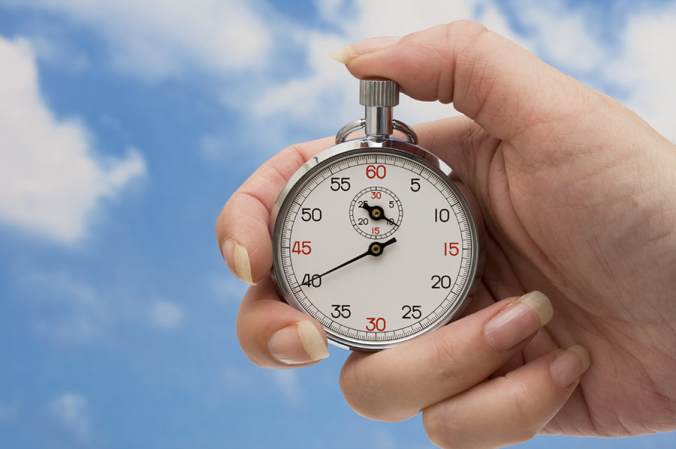Good afternoon, friends and neighbors.
The clock starts as soon as I walk in the door.
In the first 10 – 15 minutes of my day in the bakeshop, I need to:
1. Determine the state of the front counter and what they will need immediately.
2. Whether anything has been requested that I didn’t anticipate the day before.
3. Amalgamating my task list for the day.
4. Pulling anything that will need time to come to a workable temperature (frozen doughs, cream cheese to soften for icing, etc.)
5. Prepare my station- knife roll where it’s accessible, sanitizer bucket and towel, extra dry towel tucked in my apron.
6. Review any instructions from the pastry chef.
7. Get a cup of tea or energy drink in me.
Once I have that list ready (as well as an energizing beverage), the planning begins.
“Mise en place” is usually used to mean physical objects in space- the placement of ingredients and tools around you, the amounts of the ingredients, and the speed and efficacy of their use. In a lot of ways, life in a bakeshop is a logistical puzzle- “What is the best way to get this list finished using my available materials, equipment, and space, within the time limit?”
That last bit is the part that goes unmentioned in mise en place- time management. Time is another resource that needs to be gauged, accounted for, and placed well so that you don’t spend time running in circles. If mise en place means “putting in place,” then think of this as “mise en temps”- “putting in time.”
Here are the ways that I look at my tasks and timeline in the kitchen- and how you can work them into your own life.
For each task, identify the small details. Where do you need to be? What do you need to have on hand? What will you be expected to do, and how long will it take? You can’t complete tasks if you don’t know HOW to complete them, or what’s involved. For example, I know from experience and practice that it will take me about 40 minutes to get six quiche into the oven. It will require ingredients, a cutting board, any cooking equipment I might need (a sheet pan and oven space if I’m roasting, a frying pan and range space if I’m pan-cooking), oven space for pre-baking the crusts, table space to do it all, and my own attention and effort. Anything I can get in line to streamline the process (i.e. mise en place) should be done.
This may or may not have a lot to do in your daily life, but it’s still an important part of understanding your tasks- the parts of them where you don’t need to do anything. In my case, this is often baking time, or extended mixing times. Once the quiche are in the oven, I don’t need to stand there and watch them bake. I know that I can set the timer for an hour, when I will have to turn them- but that’s an hour where I can move further down my list of tasks, followed by another hour after the turn. In those two hours, I can knock out a batch of caramel, start rolling out crusts for later, or any number of other tasks- all the while, the quiche is moving itself toward completion.
What things can progress toward getting done without you? Get them to that point first, if you can. Let the oven do its work- while you get other things done. Let the labor-saving devices save you labor.
“No plan ever survives contact with the enemy”- Helmut von Moltke
Things will crop up, emergencies will occur, and priorities will shift on a moments notice. Someone will trip in the walk-in and spill my quiche mix, or the oven will have to go down for a bit. Yes, it sucks, but roll with it. You have your list, but its not set in stone. Whenever things started to go sideways in the kitchen and I started to feel overwhelmed (a.k.a. “in the weeds,”) my mantra was “freak out when you have the time.” Observe, Assess, Plan, then Act. You can freak out over your post-shift drink, or complain about it to people on Facebook later. The worst thing you can do in this instance is freeze up and do nothing.
Sometimes nothing will go wrong, but you’ll still lose the timeline. You might take a look at your list and find three things that can/should get done “now.” While quiche are baking or cream cheese is softening, I might look at my tasks and just kind of stare at the list for a bit. “Which of these should I do next?”
The answer is, “SOMETHING.” If you can do them in any order, then pick one and just get started. Progress in ANY direction is better than standing still. In the kitchen, one of the unspoken rules is “ABM”- “Always Be Moving.” One step in a direction leads to another, and you’ll get your momentum back soon.

Photo by energepic.com from Pexels
Nope. No one. Our brains are literally not wired for it. What most people call “multitasking” is actually just the ability to shift their energy and attention between different tasks quickly, and do so without tiring for extended periods. This is VERY different from being able to do multiple things at once.
Recognizing this actually gives you a leg up. By Understanding Your Tasks, Identifying Hands-Off Time, and Freaking Out When You Have The Time, you can minimize the attention-shifts you need to do, and how often you need to do it. Give your focus and attention on the things that need it- what you are doing RIGHT NOW. Think about the rest when it needs it.
“Haste makes waste.” It’s wisdom as old as the hills, and I can’t count how many otherwise-excellent preparations I’ve ruined with impatience, or tried to get done before the materials or equipment were ready to use. You have a timeline, of course- but so does everything else. This is part of the logistical puzzle- you need to give everything the time it needs to get done. Can you hustle through your OWN actions? Sure. Rushing things that need their time to get done, though, can lead to trouble. Cooking and baking may be the art of control, but part of that control is ironically working around what you CAN’T control. At the very least, you always have control of yourself. Make THAT work.
This is a bigger one than you think, and its NOT a free pass to procrastinate. It’s a reminder to be realistic about what you can do, what you have to do, and what is available to you. Once the quiche are done, would it be GREAT if I could prep all the cookies for tomorrow morning? Sure- it’d save me time the next day. That would involve taking up rack space that I don’t have though, and individually wrapping each sheet pan to keep the cookie dough from drying out. Could I just bake them today? Yes, but then that’s one more day that they go stale. My friend Gwen, when she started, would make double batches of batters so she wouldn’t have to do them later in the week- and she had to stop because the batters were going bad, and thereby wasting product. Did it mean more work later in the week? Yes- but it also meant a fresher product and less waste.
Part of giving things the time and attention they need is also DOING them in their correct time. Understand your Tasks- there is nothing wrong with getting ahead, but don’t try to outsmart your common sense.
———-The day winds down. A quick look over the list to double-check I got everything done that I needed to. Non-priorities that can wait get bumped over to the next day’s list. Anything that needs to be pulled out for tomorrow (and can be) gets pulled. I clean down my station, do my sidework, and go over the list for tomorrow. All of it is subject to change. Fine.
I clock out, and the day is over.









